Have you ever wondered why your cat seems magnetically drawn to certain rooms while completely ignoring others? Perhaps they’ve claimed the master bathroom as their personal fortress, or they refuse to leave the bedroom closet despite your attempts to coax them out. This fascinating behavior isn’t random at all.
Cats need a familiar, positive, and predictable environment that they feel they have control over, and their room preferences reveal deep insights into their emotional state and security needs. Understanding these choices can transform how we see our feline companions and help us create environments that truly support their wellbeing. Let’s explore the hidden psychology behind where cats choose to spend their time.
The Science Behind Feline Territory Selection

Cats rub their cheeks on prominent objects in their preferred territory, depositing a chemical pheromone known as a contentment pheromone. This behavior transforms spaces into emotional safe zones. When your cat repeatedly chooses the same room, they’re actively creating a chemical map of comfort and familiarity.
Cats mark their scent by rubbing their face and body, which deposits natural pheromones to establish boundaries within which they feel safe and secure. Think of it like an invisible security system that only they can detect. These scent markers tell them this space belongs to them and signals to other animals that the territory is claimed.
Usually, the area where your cat spends the majority of their time is their territory. This explains why some cats develop such strong attachments to specific rooms that they become distressed when access is restricted. They’ve invested emotional energy in creating their perfect environment.
Bedroom Preferences and Sleep Security
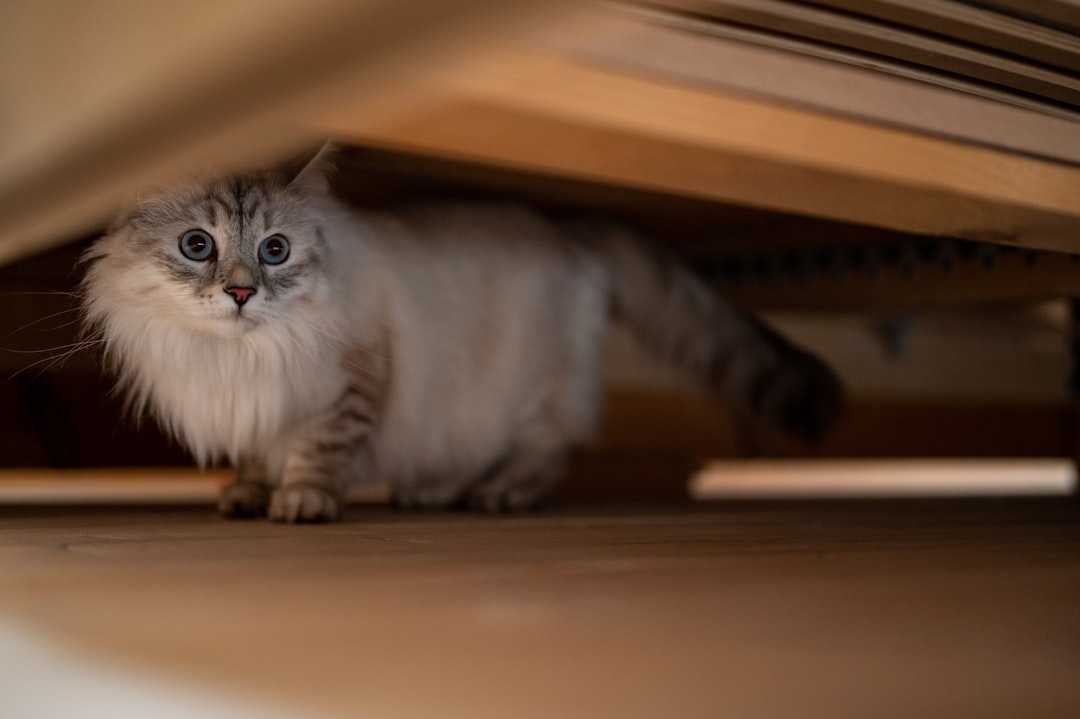
Cats love to turn the space under beds into their personal hideout. This dark, cozy spot is perfect for anxious kitties. The bedroom represents the ultimate sanctuary because it combines multiple appealing elements: your scent, quiet darkness, and elevated hiding spots.
The space under a bed is an ideal hiding spot for cats, providing a dark, quiet, and undisturbed sanctuary. Cats naturally gravitate towards areas where they can feel safe from the hustle and bustle of everyday life. This secluded spot offers a retreat from noise and activity, allowing them to rest and recharge in peace.
The closet might feel comforting to your cat because it’s scent-heavy and often smells a lot like the owner. The closet is also appealing because it’s dark, and there are lots of soft articles of clothing plus an option to climb up high. Bedrooms become emotional command centers where cats feel most connected to their human family.
Bathroom Fascination and Water Zones
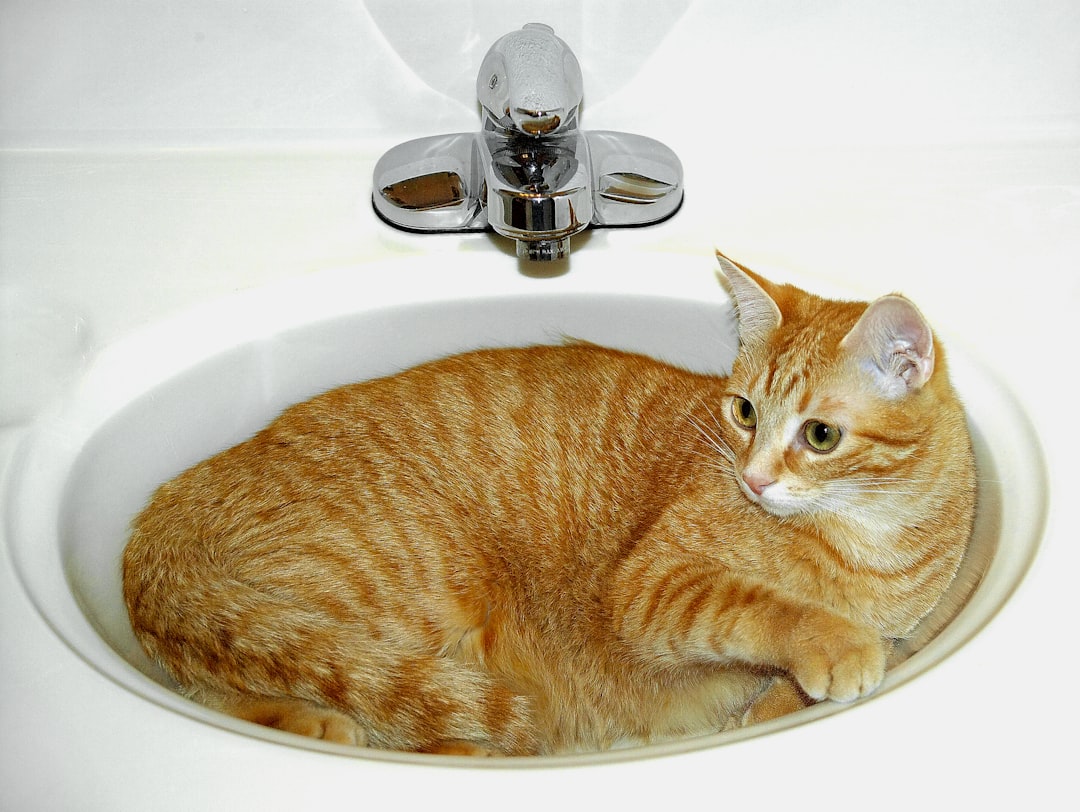
The average bathroom sink is just the right size to contain your furry friend, much like a cardboard box. Additionally, cats find the coolness of the sink comfortable. The proximity of running water to drink is a bonus. Bathrooms offer an intriguing combination of temperature control and sensory stimulation.
You may pull back your shower curtain to find your cat sitting in the tub. Although it’s a much bigger structure, the bathtub also provides a cool, secure hideout. The porcelain surfaces provide temperature regulation while the enclosed nature satisfies their need for boundaries.
The bathroom’s unique acoustic properties also appeal to many cats. The hard surfaces create interesting echoes, and the sound of running water can be both soothing and stimulating. Many cats discover that their meows sound particularly impressive in bathroom spaces, which may explain some of their vocal performances during your morning routine.
Kitchen Territory and Resource Guarding

Their territory includes the area where they eat, sleep, and hunt. The kitchen naturally becomes a high-priority zone because it’s associated with food resources. Even well-fed indoor cats maintain strong instincts around food security and may claim kitchen spaces as their hunting grounds.
The area your cat claims as his to hunt (eating and drinking) often extends beyond just the feeding station. Cats may patrol countertops, monitor the refrigerator, and position themselves strategically to observe all kitchen activity. This behavior stems from their ancestral need to control food resources.
Kitchen preferences also reflect social dynamics. Cats who feel secure in their position within the household often claim prominent kitchen spots, while more anxious cats might prefer to observe from doorways or elevated perches. The kitchen becomes a barometer for measuring family hierarchy and social confidence.
Living Room Social Dynamics
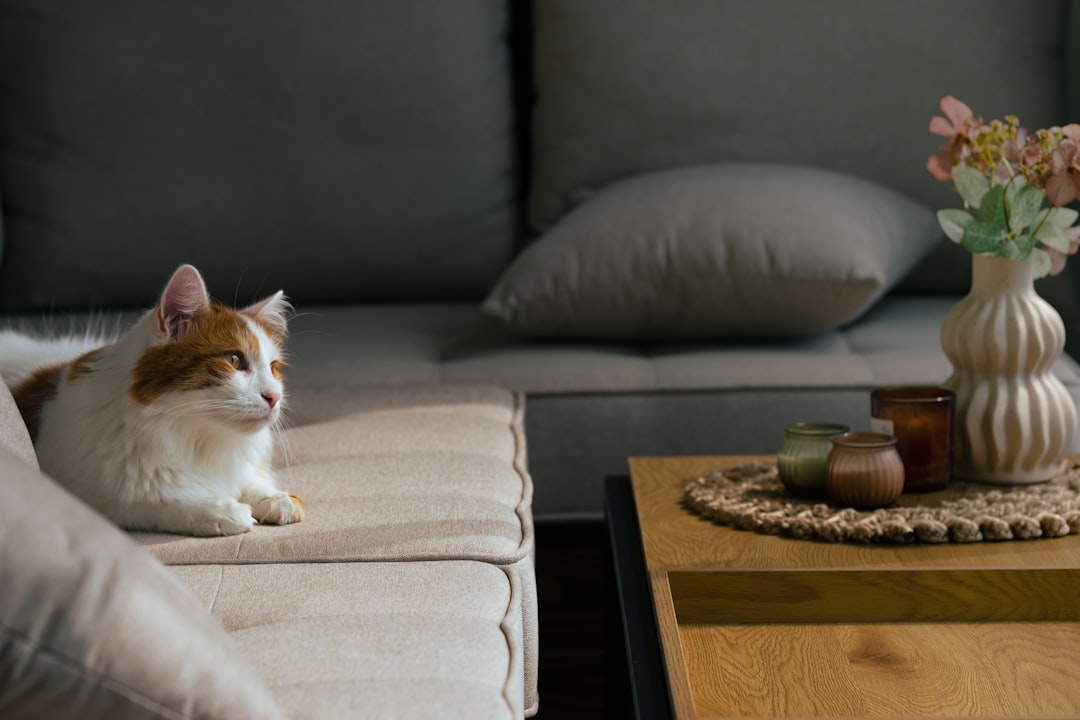
The area that is shared with others (people, dogs, and other cats) in a household (hanging out, watching, waiting, and socializing) typically centers around the living room. However, cat preferences here vary dramatically based on their social comfort level and personality type.
You might find them sprawled out on their back, legs in the air, or curled up in the middle of a busy room. These positions indicate that they feel no threat and are comfortable enough to relax completely. It’s akin to a person falling asleep in a hammock, feeling secure and at peace. When your cat chooses to sleep near you or in an open space, it’s a sign of their trust in their environment.
Confident cats often claim central living room locations, while more reserved cats prefer observation points along the periphery. Cats also like to be high up and have nice places to perch where they can see what’s going on, which explains why many cats prefer the backs of sofas or bookcases in social areas.
Closets and Hidden Sanctuaries
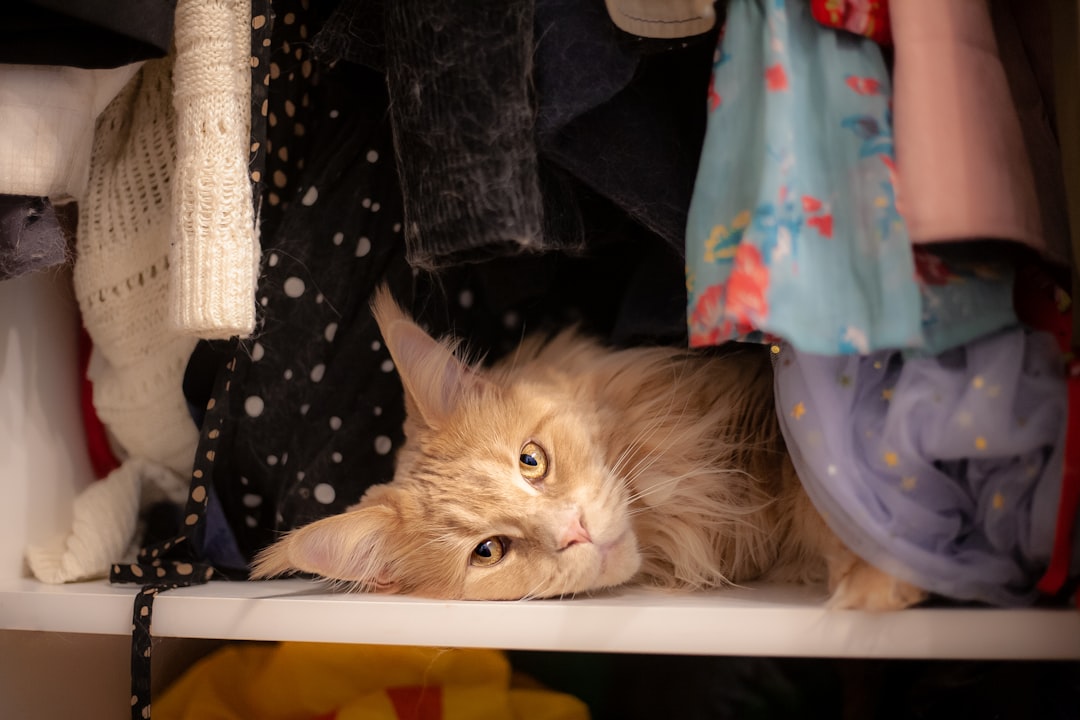
Oliver does not like strangers in our home. As soon as he hears the knock at the door or the doorbell, he vanishes! His favorite hiding spot right now is in the upstairs hall closet, in the back, nestled on our clean sheets. It gives him comfort to find a safe spot. Closets represent ultimate security for many cats.
The sturdy walls and compact size create a perfect hideaway, shielding them from potential threats or disturbances. These boxes offer the ideal spot for cats to observe their surroundings while remaining inconspicuous. The box’s edges allow them to peek out and monitor activities, granting them a sense of control and comfort.
These boxes also retain the scent of their owners, providing an additional layer of familiarity and reassurance. For many cats, the scent of their human companions offers a comforting connection, making these humble spaces a cherished retreat in a bustling household. Closets become emotional anchors in uncertain times.
Multi-Cat Household Room Politics

Hiding spots around the home can also help keep the peace in multi-cat families. Cats who are prone to being chased or bullied by more dominant cats (or dogs) in the home will appreciate safe places to hide where they go unnoticed by other animals. While I encourage you to work on improving those relationships where there is aggression happening between animals in your home, providing some safe hiding spots can go a long way to giving your kitties the space they need to peacefully coexist.
In a multi-cat home, cats that are friends may choose to cuddle up in the same safe spaces, but cats should always have access to their own independent safe spaces too. Room preferences become more complex when multiple cats must negotiate territory sharing.
Marking behaviors often occur in multi-pet households as your cats may feel there aren’t enough resources to go around. Provide multiple food and water sources, as well as scratching posts and toys, so your kitties don’t feel they need to claim such objects by marking. Each cat should feel that they have a core territory that’s theirs. Strategic room design can prevent conflicts and promote harmony.
Stress-Response Room Selection

There may be times when your fur baby hides because they’re stressed out. Usually, though, they’re just relaxing in a space that feels secure. Understanding the difference between normal preference and stress-induced hiding is crucial for cat owners.
Cats will hide when they’re stressed or anxious due to changes in routine or environment. Some situations that can cause stress for cats include major life changes, like moving to a new house or adding another person or pet to the household. A recently adopted cat might hide, too, because they are in an unfamiliar environment and may feel overwhelmed and anxious. Coming into an entirely new place is scary and stressful for cats, so they’ll often try to find places away from others while they get used to their new home.
Any time an indoor cat feels threatened or distressed, he may leave a mark to affirm the location of a safe territory. A change in household routine, the addition of a person or pet, or even a remodeling project can trigger anxiety and marking. Sudden room preference changes often signal underlying emotional distress.
Creating Optimal Emotional Zones
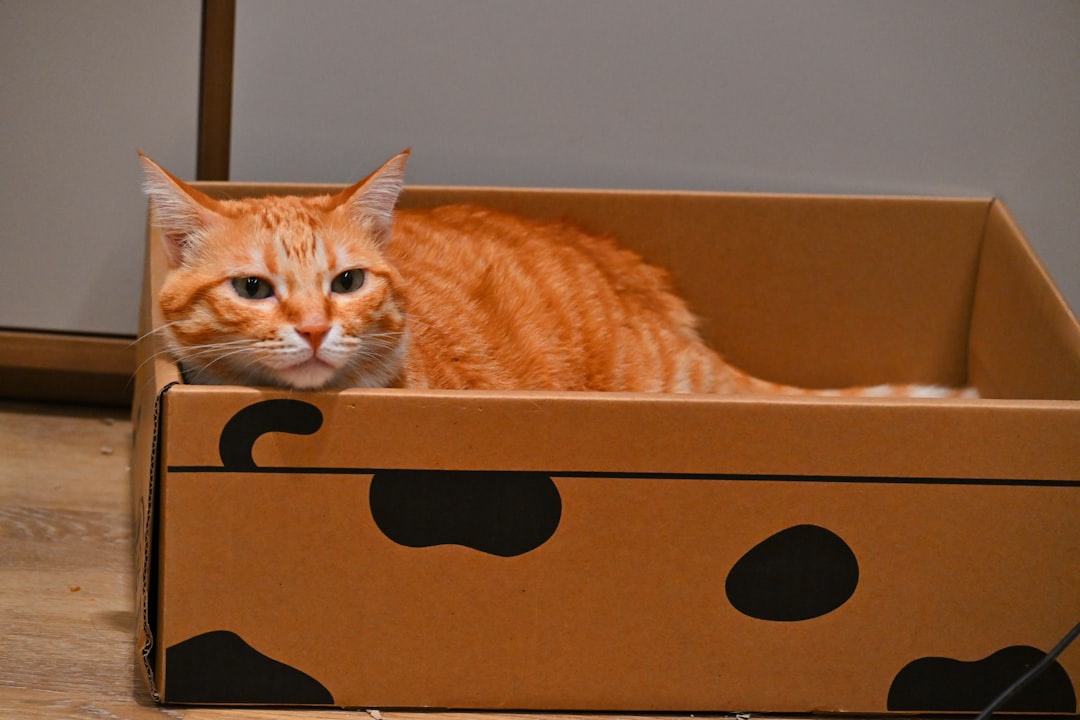
Think about where to place them too – in quiet places for times when your cat wishes to be secluded, and in quiet parts of rooms where you spend a lot of time so they can be near you but still in their own safe space. Strategic placement of cat resources can enhance their natural room preferences.
Cats need vertical space to help them feel safe and survey their environment from a secure location up high off the ground. A cat tree meets this need very well, and can also provide cozy hiding spots if you choose one with a tunnel or cubby nook. Height adds another dimension to territorial security.
You can give your cats some fun places to hide that they don’t have to seek out to find. A simple cardboard box tipped on its side with a cat bed in it will suffice for many felines, and you can put it just about anywhere. Or, if there’s a piece of furniture (like a bed) that your cat likes to hide under, you can put a towel or blanket there so that her nap spot is a bit comfier.
Conclusion
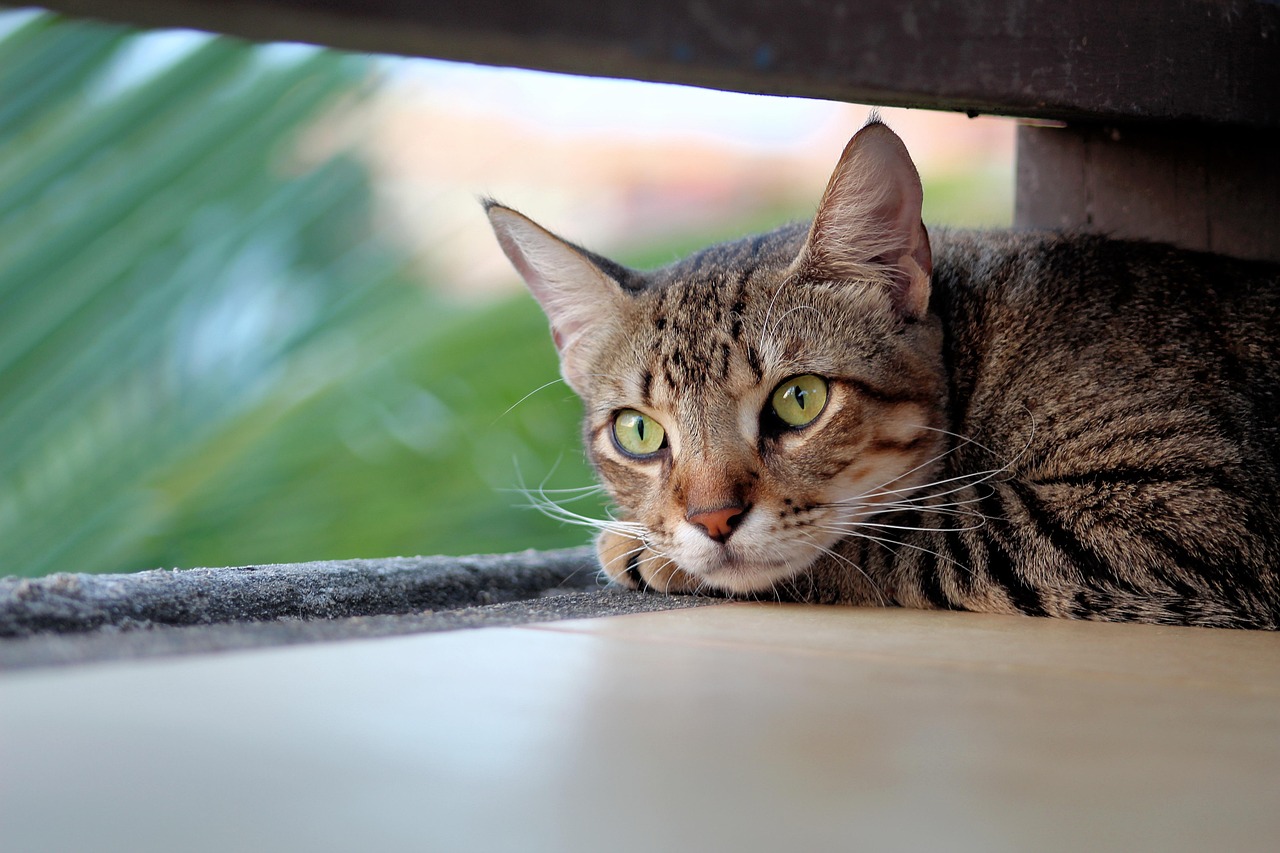
Understanding your cat’s room preferences opens a window into their emotional world and reveals the sophisticated ways they create security in our shared spaces. These choices aren’t arbitrary but reflect deep-seated needs for territory, comfort, and emotional regulation. Cats need a familiar, positive, and predictable environment that they feel they have control over, and their room selections are masterful demonstrations of this principle in action.
By recognizing and respecting these preferences, we can strengthen our bond with our feline companions while ensuring their psychological wellbeing. The next time you find your cat curled up in an unexpected spot, remember that they’re not just resting – they’re actively managing their emotional landscape and claiming their place in your shared world. What room has your cat claimed as their emotional sanctuary, and what might that tell you about their inner state?





